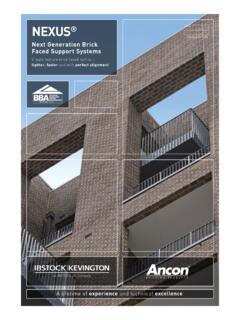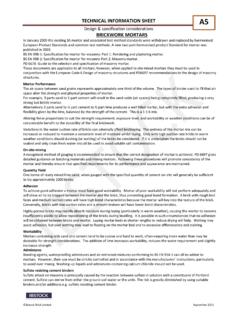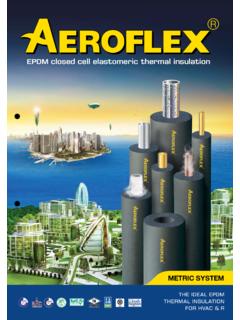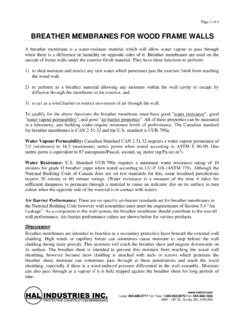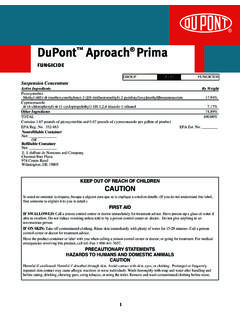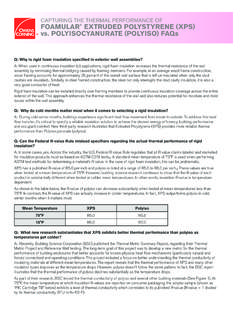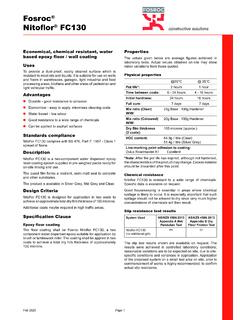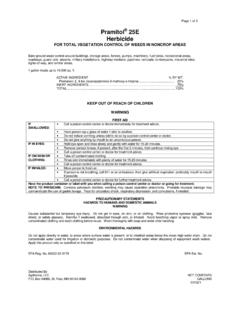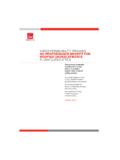Transcription of DESIGN & SPECIFICATION CONSIDERATIONS …
1 DESIGN & SPECIFICATION CONSIDERATIONS BRICKWORK MORTARSFor further information or advice regarding this topic please contact Ibstock s DESIGN & Technical Helpline on 0844 800 4576 or email PAGE 1 OF 4 TECHNICALINFORMATIONA5In January 2005 the existing BS mortar and associated test method standards were withdrawn and replaced by harmonised European Product Standards and common test methods. A new two-part harmonised product Standard for mortar was published in EN 998-1: SPECIFICATION for mortar for masonry: Part 1: Rendering and plastering EN 998-2: SPECIFICATION for mortar for masonry-Part 2: Masonry 6678: Guide to the selection and SPECIFICATION of masonry documents are applicable to all mortars; however, when applied to site mixed mortars they must be used in conjunction with the European Code 6 DESIGN of masonry structures and PD6697 recommendations to the DESIGN of masonry PERFORMANCEThe air space between sand grains represents approximately one third of the volume.
2 The types of binder used to fill that air space alter the strength and physical properties of mortar. For example, 3 parts sand to 1 part cement will result in the sand voids (air spaces) being completely filled, producing a very strong but brittle 3 parts sand to part cement to part lime produces a well filled mortar, but with the extra adhesion and flexibility given by the lime, balanced by the strength of the cement. This is a 1:1:6 these proportions to suit the strength requirement, exposure level, and workability or weather conditions can be of considerable benefit to the durability of the final brickwork.
3 Variations in the water suction rate of bricks can adversely affect bricklaying. The wetness of the mortar mix can be increased or reduced to maintain a consistent level of moisture whilst laying. Only with high suction rate bricks in warm weather conditions should dunking (or wetting) of the bricks be considered. If it is undertaken the bricks should not be soaked and only clean fresh water should be used to avoid soluble salt contamination. ON-SITE MIXINGA recognised method of gauging is recommended to ensure that the correct designation of mortar is achieved. PD 6697 gives detailed guidance on batching materials and mixing mortars.
4 Following these procedures will promote consistency of the mortar and thereby ensure that specified requirements for its performance and appearance are YIELDOne tonne of ready mixed lime:sand, when gauged with the specified quantity of cement on-site will generally be sufficient to lay approximately 1000 achieve good adhesion a mortar must have good workability. Mortar of poor workability will not perform adequately and will allow air to be trapped between the mortar and the brick, thus preventing good bond formation. A brick with rough bed faces and medium suction rates will have high bond characteristics because the mortar will key into the texture of the brick.
5 Conversely, bricks with low suction rates and a smooth texture will have lower bond porous bricks may rapidly absorb moisture during laying (particularly in warm weather), causing the mortar to become insufficiently plastic to allow repositioning of the bricks during levelling. It is possible in such circumstances that no adhesion will be obtained between bricks and mortar. Laying mortar beds in shorter lengths to reduce drying will help. Wetting may assist adhesion, but over wetting may lead to floating on the mortar bed and to excessive efflorescence and containing only sand and cement tend to be coarse and hard to work, often-requiring more water than may be desirable for strength CONSIDERATIONS .
6 The addition of lime increases workability, reduces the water requirement and slightly increases agents, waterproofing admixtures and air entrained mixtures conforming to BS EN 934-3 can all be added to mortars. However, their use must be strictly controlled and in accordance with the manufacturers instructions, particularly to avoid over mixing. Washing-up liquids and admixtures containing calcium chloride should not be RESISTING CEMENT BINDERSS ulfate attack on masonry is principally caused by the reaction between sulfate in solution with a constituent of Portland cement. Sulfate can derive from either the ground soil water or the units.
7 The risk is greatly diminished by using suitable binders and/or additions sulfate resisting cement attack will only occur where there is considerable water movement through the masonry in freestanding walls, below sills where effective DPC s have not been provided, through earth retaining walls which are not water-proofed on the retaining face and external walls between ground level and DPC. Ibstock Brick Limited Issue 1 DESIGN & SPECIFICATION CONSIDERATIONS BRICKWORK MORTARSFor further information or advice regarding this topic please contact Ibstock s DESIGN & Technical Helpline on 0844 800 4576 or email PAGE 2 OF 4 TECHNICALINFORMATIONA5 PERMEABILITYS trong mortars will provide better resistance to water penetration, but offer less resistance to differential movement.
8 Rain penetration can be greatly reduced by good DESIGN and proper selection of the sand grading. Rich mortars (high cement content) will crack more easily than weak mortars. Weak mortars are more tolerant to movement but the voids between the sand grains will, however, contain less cement, allowing water to penetrate more easily. Uneven mixing of the mortar can result in a cement deficiency in some areas and rain penetration can occur under some conditions of moderate BENEFITS OF HYDRATED LIME IN CEMENT MORTARThe benefit of using hydrated lime in cement mortar has been recognised by builders throughout the correctly gauged with cement this mortar offers Excellent workability- flows easily assisting the filling of mortar bed and perpend joints.
9 High water retentivity- reduction in the effect of suction from bricks ensuring complete contact between mortar and unit aiding water-tight joints. Strength development- early strength is produced with the continued carbonation of the lime giving increased strength and durability after. Elasticity- inevitable small movements of buildings during and after completion can be taken up without excessive certain conditions if minor cracks have appeared they can heal themselves by a process called autogenous healing . Rain water takes a little of the lime into the void as a solution but the lime remains after evaporation of the water.
10 Reaction with air turns the lime into calcium carbonate continually hardening as time passes. This provides improved resistance to wind driven rain. Efflorescence- in certain cases, hydrated lime containing mortars can reduce instances of efflorescence by minimising the amount of water that can enter the structure via hairline cracks in the mortar/brick AND LIME BLOOM ON MASONRY MORTARA esthetically mortar takes up 17% of the face of a brick wall. It is important to get the appearance of the mortar joints correct to enhance the finished main causes of unsightly masonry are; Constructional blemishes-marking bricks with mortar.
